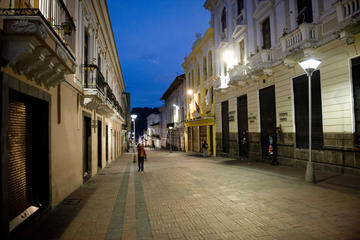Calle La Ronda
TIME : 2016/2/22 10:39:27

Calle La Ronda
In downtown Quito, you’ll find the essence of the city along the emblematic street affectionately called Calle La Ronda. Visiting this pedestrian street at the southern end of the Old Town is like taking a walk back in time.
The narrow houses with their balconies and interior courtyards tell the story of Spain’s influence in Ecuador. But the history of Calle La Ronda goes much further back; rumor has it the Incas used this same path beginning in the 1400s. In time, people established houses along the route, and taverns were opened to care for the needs of travelers.
Painters, poets, musicians, writers and other influential people have been drawn to this street, where the colonial architecture, music, art and food sum up the identity of Quito. Although the area went through a period of violence, it has since been restored and is now a safe place to visit, especially popular among locals and tourists on weekends.
Go at night to get the full cultural flavor, when live music spills out of tiny bars and the bohemian atmosphere makes it seem as though the artists and poets that lived on this street in times past have come to life again.
Antique stores and souvenir shops provide a peek into the past as well as the local culture and give visitors a chance to pick up popular Ecuadorian take-homes like Panama hats (which are actually from Ecuador). In addition to the restaurants lining the street, there are also small shops that sell delicious empanadas, chocolate-covered strawberries, canelazos (a typical hot drink made with aguardiente and cinnamon), and other traditional Quito dishes.
Practical Info
Calle Juan de Dios Morales, referred to as Calla La Ronda, is just one block south of the Santo Domingo Plaza. Taxis are often recommended for travel around Quito, but it’s also easy to get to La Ronda from the trolley bus line — just get off at the Santo Domingo stop and walk from there.
